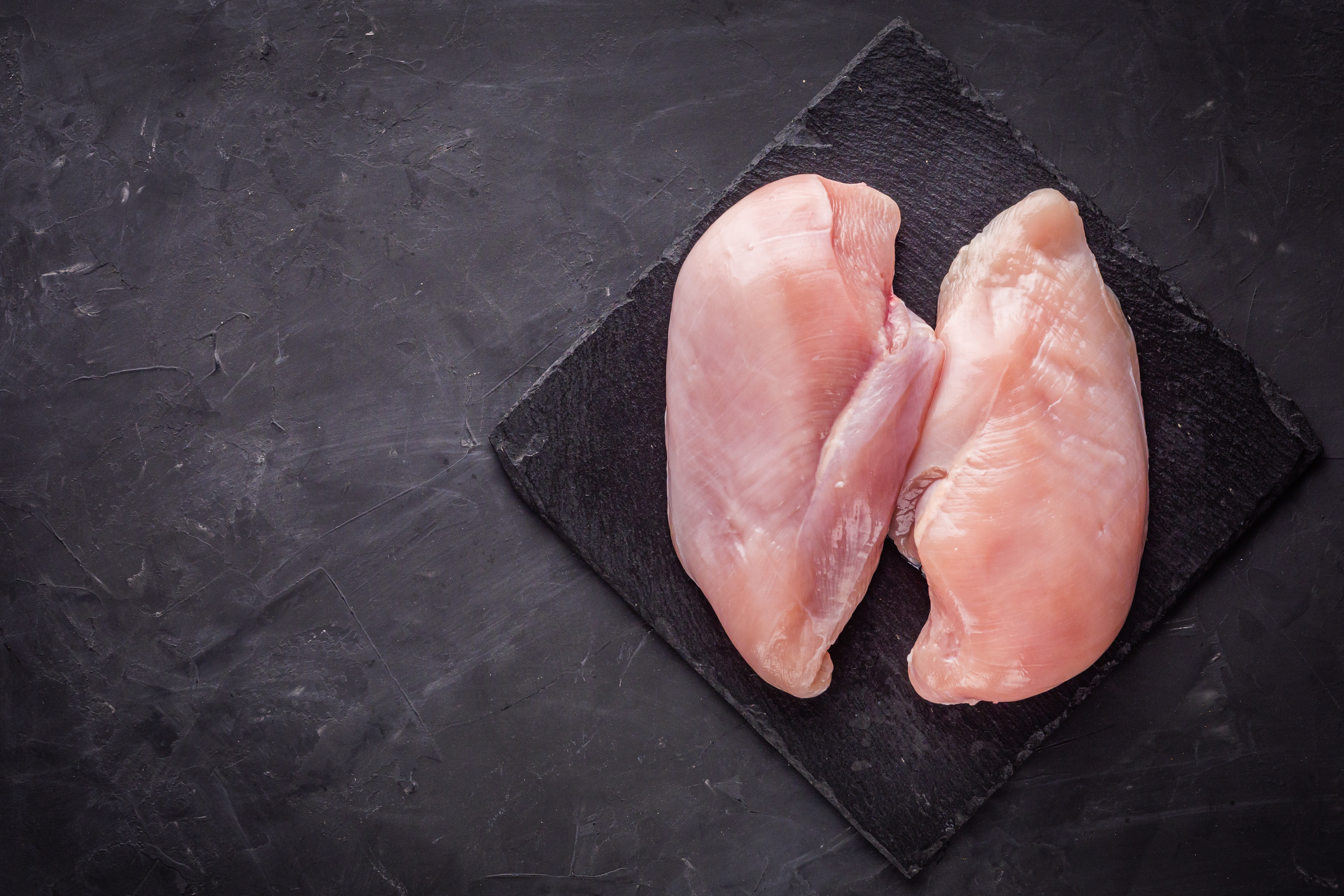Add this to the list of things your parents never taught you: the difference between a chicken breast vs. chicken thigh. This doesn’t seem like something you’d care too much about until you find yourself standing in the meat section at the grocery store reading the labels. The poultry section at the market is full of different options — but what’s really the difference? Isn’t chicken just chicken?
We’re here to explain that chicken is not, in fact, just chicken. Just as there are different cuts of steak that are derived from different parts of the cow, there are different edible parts of the chicken as well. In this chicken guide, we’ll explore the nutritional differences between these two kinds of chicken, flavor differences, and how to know which you should use in different types of recipes.
Chicken breast vs. chicken thigh differences
Chicken breast and chicken thigh have different flavors, which are directly linked to the differences in their nutritional profiles. Chicken breast tends to be much leaner, containing more protein and less fat and calories than chicken thighs. For this reason, it’s often a good option for those who are on a high-protein diet or looking to eat less fat, such as on a cutting diet routine. On the other hand, chicken thighs have more calories, with a higher fat content and lower protein content than chicken breast.
The differences in fat and calorie content explain the differences in taste between these cuts of chicken. Chicken breast has a milder flavor and consists of only white meat. Chicken thighs contain connective tissue and fat, which gives them a richer, more flavorful, and moist taste. Although many people prefer the taste of chicken thighs over chicken breasts, some people find chicken thighs to be too heavy and rich and prefer the lighter, leaner taste of chicken breast.
In the chicken section, you’ll notice several chicken thigh options. Chicken thighs may be available on the bone and with skin-on, or as boneless, skinless options. The choice comes down to preference, however, chicken thighs that do not contain the skin are lower in fat when compared to skin-on chicken thighs.
Differences in cooking

The differing fat and protein content of chicken thighs and chicken breasts is important to consider when it comes time to properly prepare each. Chicken thighs tend to be easier to cook, allowing more room for error as they have a fatter fat content. Chicken thighs can be prepared in the air fryer, oven, or on the stovetop.
In contrast, chicken breasts are easier to overcook and dry out because they have much less fat than chicken thighs. Chicken breast can also be cooked using various cooking methods, but the differences in thickness between pieces can make it tough to know exactly how long to cook it. Luckily, there are many ways to ensure your chicken breast stays moist as you cook. One way to do this is by wrapping the chicken in tin foil, which helps trap steam and retain moisture during cooking. Another option is to tenderize the chicken before cooking, which allows it to cook more evenly.
When to use chicken thigh vs. chicken breast

Now that you understand the difference between chicken thighs vs. chicken breast, the question left is, which one do you use? Some recipes have a clearly defined answer, noting whether to use chicken thighs or breasts. For example, if you’re making chicken salad where you’ll be adding mayo, all signs point to using chicken breast. On the other hand, chicken thighs make a great dinner option such as in these garlic butter baked chicken thighs. Chicken thighs tend to pair better for use in pasta dishes, casseroles, and savory, flavorful meals.
While there are times you’ll want to use one type of chicken over the other, there are also many opportunities where substituting one for the other can still yield great results. You can certainly substitute chicken breasts for chicken thighs in most recipes, but you’ll want to keep in mind that the listed cooking time will change. Chicken breasts do not need to be cooked for as long as chicken thighs.
Another factor to consider when substituting chicken thighs for chicken breasts is the fat content. There is not much oil or fat that comes off of chicken breast when it is cooked compared to chicken thighs. If a recipe calls for chicken breasts, be aware that swapping out chicken thighs will leave you with extra fat and liquid in the pan or dish after cooking. (which isn’t necessarily a bad thing, just something to be aware of).





